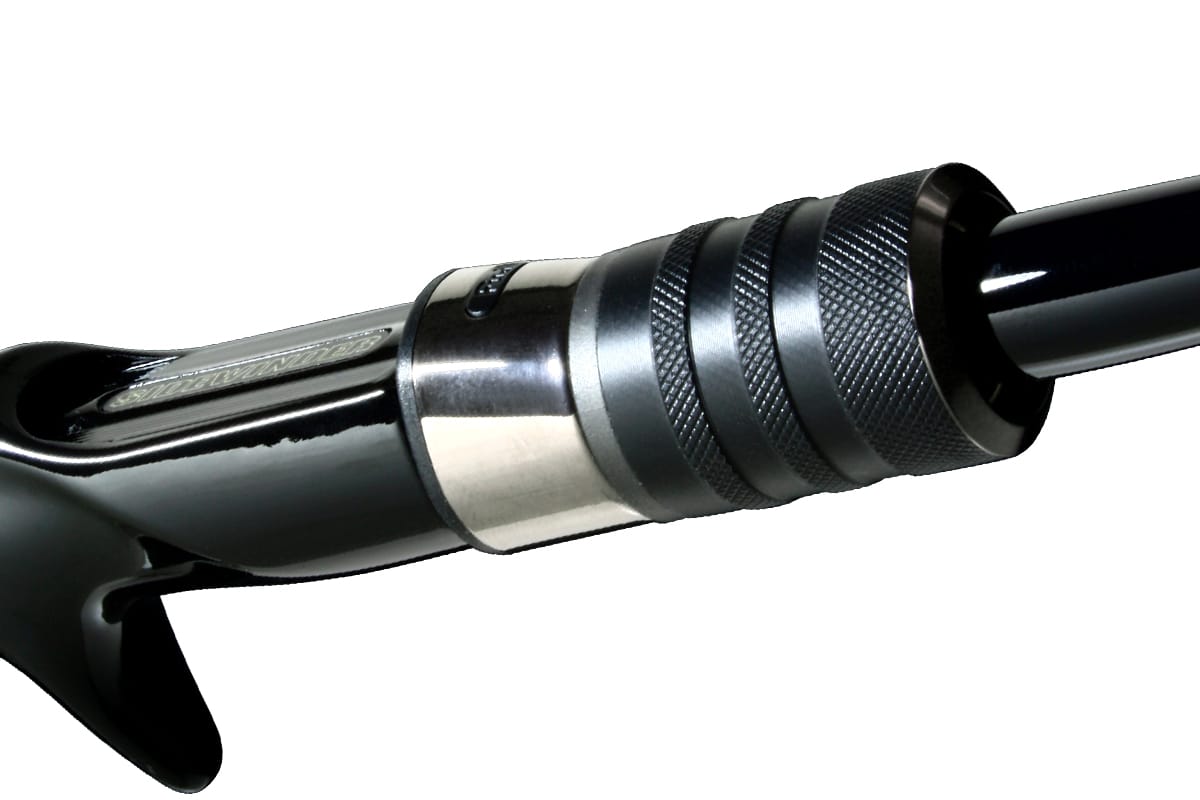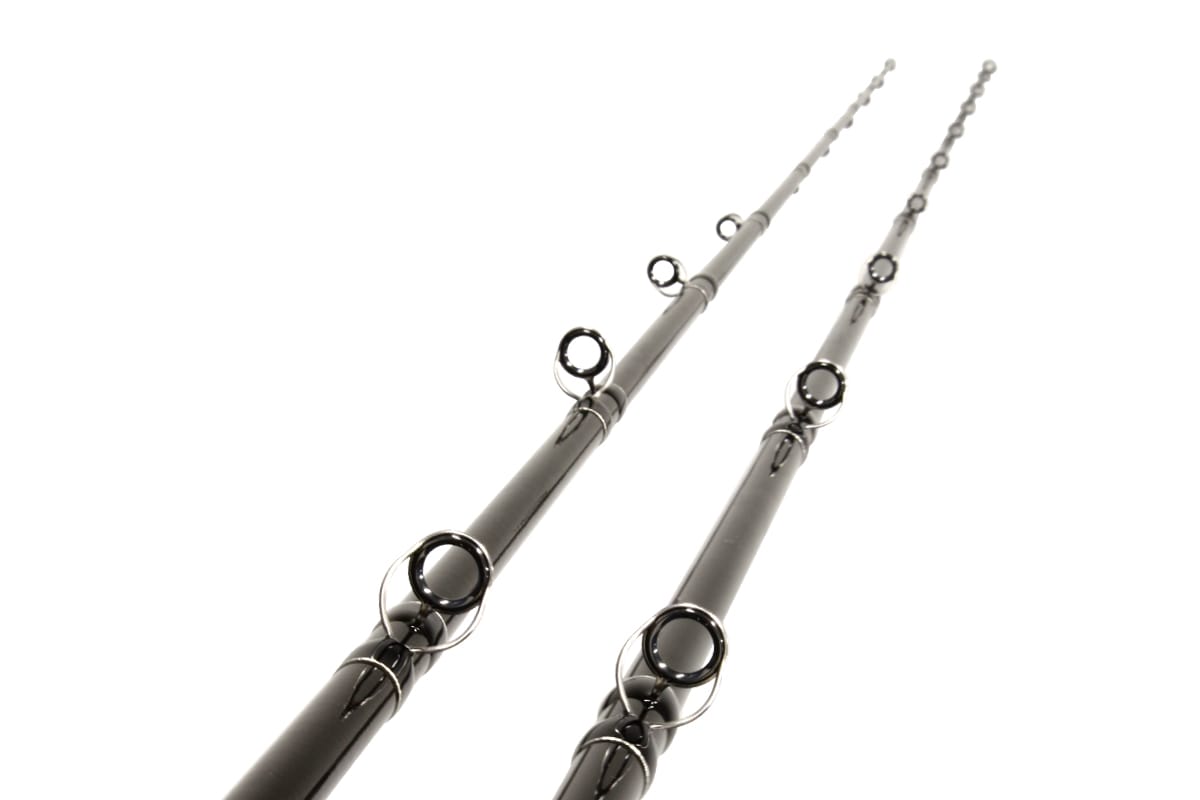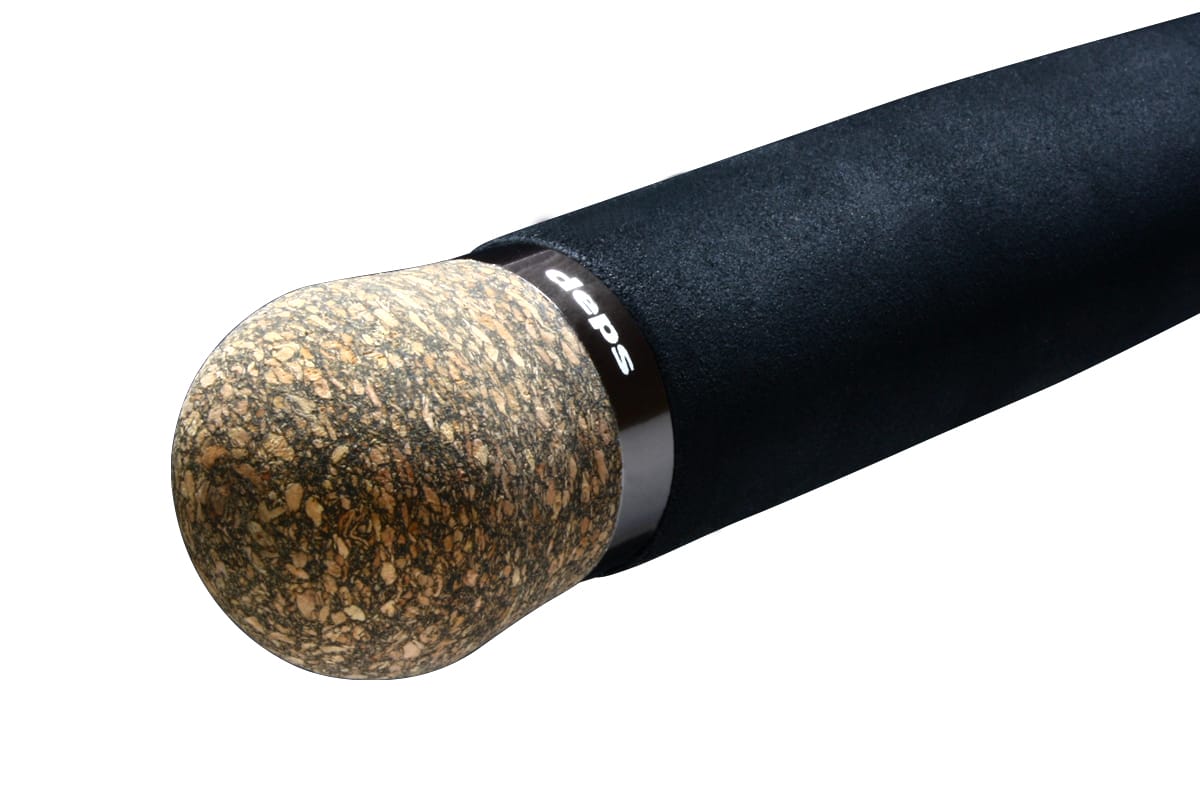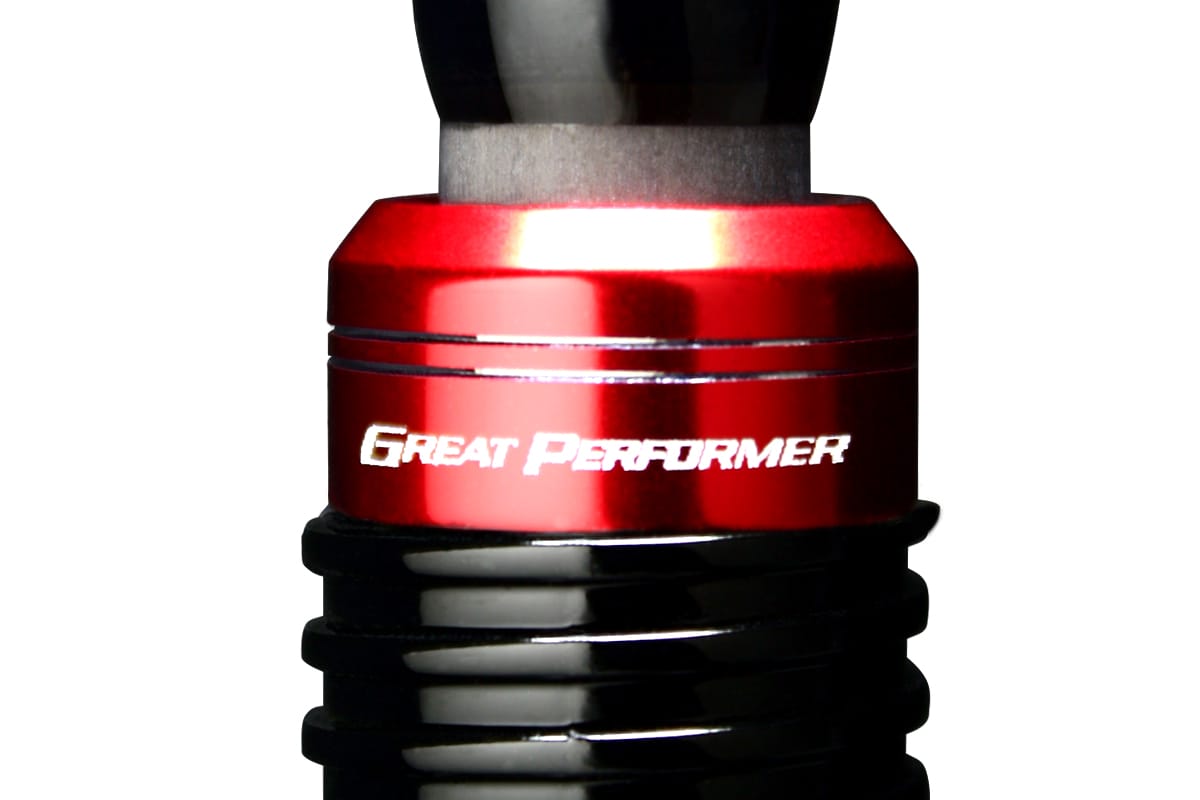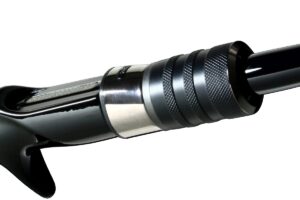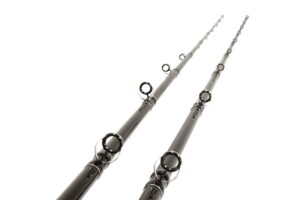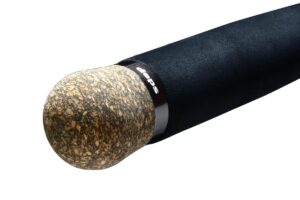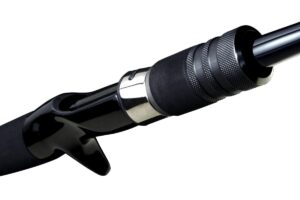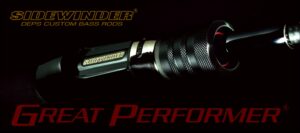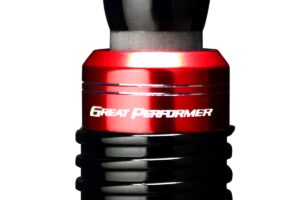- BAIT CASTING model
- Length: 6’4” 1piece
- Lure Weight: 1/4 ~ 1oz
- Line: 8-20lb
- Action: X-Heavy Slow Taper
- Grip Length: 333mm (Grip cannot be removed)
- Own weight: Approximately 149g
- Price: JPY 48,000 (excluding tax)
- JAN code: 4544551730884
- 2012.8 release.
It is a highly elastic blank that has been refined to a slow taper while keeping the butt power of the out cloth as it is, but it brings a moderate elastic feeling that a gentle smooth taper is pulled from the tip to the belly “sud”.
From the character of “constrictor” that wraps around the prey and strangles it surely, it shows a high level of suitability for playing without playing in moving lures that emphasize glue, such as large jerk baits and pencil baits.
A reel seat and fore grip that brings a soft touch during continuous jerk and reduces the burden on anglers, and a semi-short grip suitable for twitch and jerk are adopted.
Sidewinders appeared in the days when light rigs were the mainstream, where lighter and more sensitive rods were being pursued.
With ultra-high elasticity rods appearing one after another, as if going backwards in time, a torque-rich long rod with de-class power at that time cast the question, “What are you going to catch with this rod?” Was done. But our answer was clear.
“It’s a rod for catching big bass” …
In the heyday of the tournament, big bass hunting was only a style of some core anglers, but the sidewinder series that started with only three models of “slap shot”, “super border” and “outcross” is such a core. It was a rod that was created just for the Big Bus Hunter.
This specialized spec was because it was the only one that can handle the strong styles such as slow rolling of heavy spinner baits, rubber jig swimming, and big baits that are now standard.
For more than ten years since then, although there have been slight minor changes in cosmetics, the basic performance has not changed at all, so the rod has been loved.
In 2011, the new sidewinder, which was brushed up with sharpness and high rigidity that you can easily grasp without modifying the long-loved blank, also has a pedigree as the second generation sidewinder carrying the subname of Great Performer. Is firmly inherited.


